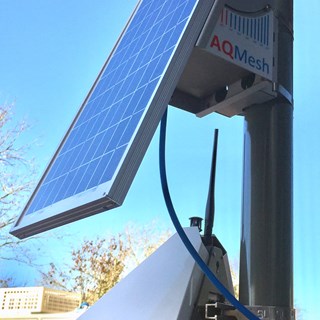Each time we think we have found a spectacularly remote monitoring location, an even more inaccessible spot is reported by one of our users. Full-day trips to visit a location have now been beaten by customers who need to charter a plane to reach them. So, remote diagnostics and support are very important.
Read MoreThere’s no doubt that small sensor systems can have an advantage over their cumbersome reference station cousins - in terms of maintenance requirements. We are often asked about ‘service’ requirements for our pods and the honest answer is that the default position, in normal working conditions, is ‘none’. However ..
Read MoreOur pods continue to be pretty popular among environmental and engineering consultancies, both here in the UK and further afield, so we asked some of them what appeals to them most about AQMesh. We were pleasantly surprised by the range of responses we received although there were a number of recurring themes.
Read MoreWe have some thoughts here at AQMesh about the common features of successful, well-run small sensor air quality monitoring projects. This is our list, but we’d love to hear your ideas.
Read MoreWe are often asked by customers whether AQMesh can operate in cold conditions. Long-term use at temperatures well below freezing, with ice and snowfall, is indeed challenging. Cold weather operation has been key to AQMesh – improved upon and proven in the field – for over 10 years. The main features, described below, have been most recently been put to the test in Iceland.
Read MoreA UK local authority installed nine AQMesh systems at different points across a busy town, measuring nitrogen dioxide (NO2) at 15 minute intervals, monitoring 24/7. These locations were established monitoring points, where measurements had been taken previously using diffusion tubes, limited to one average reading every few weeks.
Read MoreAnybody in the market for purchasing a small sensor air pollution monitoring system will need to consider budgets, but it’s not always obvious how the products being reviewed actually compare across their full operational life. A small sensor air quality monitoring system or network can be a significant purchase, so whether project-based or with ongoing monitoring in mind, it is likely that the equipment will be in use for several years. There are six main areas of cost highlighted here, all of which kick in after initial purchase.
Read MoreIs it normal to get excited about a Publicly Available Standard? For us it feels like a long time coming, and this first step on the long road towards an ISO standard for small sensor air quality monitoring is very welcome.
Read MoreAutonomous power can make all the difference in hyper-local air quality monitoring. With particulate matter sampling needing a little more power than passive gas sensors, solar is the go-to power option, rather than internal battery. Most systems require sufficiently little energy that they can be powered by a relatively small solar panel, but it’s the back-up power management that makes all the difference.
Read MoreEveryone loves holidays, whether Christmas or anything else, right? So what’s special about ‘air quality’ people? What we get so excited about are ‘free’ experiments, where distinct changes in activity help to peel away the layers of air pollution measured.
Read MoreIt’s great to see the team at the Department of Atmospheric Chemistry, University of Cambridge using their AQMesh pods for another project, this time in Lagos, Nigeria and Yaoundé, Cameroon.
Read MoreHyperlocal air quality monitoring promises to fill in the gaps between sparse reference stations – great, lots more measurements. And each of your lovely small sensor monitoring stations can measure a dozen or more pollutants and environmental conditions – even better. Or is it?
Read MoreGenerally, the limiting factor will be budget. The clue is in the name with hyperlocal air quality monitoring, and pollution levels can vary hugely over short distances. NO measurements around streets, for example, are often significantly different from one side of the road to the other, particularly if there isn’t much wind and/or a street canyon effect.
Read More




















